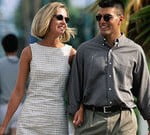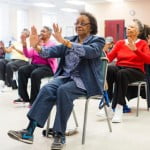Getting ready to hop on a bike this spring? To ride strong and long, you need not only the right equipment and physical stamina, but also to fine-tune your fueling skills. This will help you charge up hills and recover from spills. To ride your best, you must make the right food and beverage choices.
As a warm-up, try to drink 20 ounces (a standard-size water bottle) of liquid one hour before you ride. The best choices include water, milk – if you like it – diluted juice or green tea sweetened with honey. These are preferred over soda, fruit drinks, energy drinks or a large smoothie, which take longer to leave your stomach and contain a lot of calories.
It takes about 60 minutes for 20 ounces of fluid to leave your stomach, so time your drinking according to when you ride. Even if you are a heavy sweater, there is no need to drink a gallon before you mount your bike. But a sip won’t work either.
[See: 8 Signs You Are Made to Be an Athlete.]
If you don’t drink fluids beforehand, it gets harder to drink enough when you ride, since your body is now playing catch up. Riding on empty forces your body to use its own muscle as a fuel source. However, too much can upset your stomach.
Aim also to eat a small amount of food 30 to 60 minutes before your ride. Or, if your pre-ride beverage has calories in it such as milk, a low-fat latte or diluted fruit juice, you don’t need to have additional fuel.
Consider these options:
- Half a peanut butter and jam or peanut butter and honey sandwich
- Small banana with 1 tablespoon nut butter
- 1/4 cup trail mix
- 1 cup of cereal and milk
- 6-ounce Greek yogurt with 2 tablespoons of granola
Eating and Drinking During Rides
For one hour of cycling, water alone is fine. But once you start spending more time than that on the bike, and riding longer distances, you need to be consuming some fuel on the bike. That’s when a sports drink, or products such as energy chews, gels, chomps, honey wands – sticks made of crystalized honey – or sugar cubes come in handy. On average, most people need only about 30 grams of carbohydrates per hour of riding after the first hour. So pick one of the following per hour:
- 1 gel pack
- 4 energy chews – carbohydrate-containing products made from glucose, maltodextrin and/or honey
- 16 ounces of sports drink
- 6 to 8 sugar cubes
- 3 honey sticks
- 2 tablespoons or a mini box of dried fruit
Calculate Your Hydration Needs
You need to drink according to your sweat rate, so plan on weighing yourself before and after your long rides. To calculate your sweat rate, subtract your lower post-ride weight from your pre-ride weight. Then take that number in ounces (remembering that there are, of course, 16 ounces in a pound), and add it to the ounces of fluid you usually drink when you ride (use a measuring cup to figure this out, or look on the bottle). Take that total number and divide it by the number of hours you ride – this will equal your hourly sweat rate, or the number of ounces of fluid you need to drink per hour.
Example: pre-ride weight of 180 pounds – post–ride weight of 178 pounds = 2 pounds, or 32 ounces
+
20 ounces (the number of ounces of fluid consumed during the ride)
÷
2-hour ride
32 ounces + 20 ounces = 52 ounces ÷ 2 hours = 26 ounces of fluid required per hour
Make sure to practice getting in the fluid while you ride – which means you have to have it available – and also try to consume gulps instead of sips when riding. Larger volumes of fluid leave the stomach faster, so you won’t feel bloated.
[See: Osteoarthritis and Activity: Walking It Out.]
The Role of Salt
If you notice that sweat stings your eyes, tastes salty in your mouth, your skin feels gritty or there are white streaks on your jersey, shorts or inside of your cap, that is salt!
Those who are salty sweaters may be more prone to muscle cramping, so you shouldn’t drink water exclusively. Adding salt to your beverage, and/or bringing salty food with you, such as pickles, mini pretzels or oyster crackers, can be helpful.
But What About Caffeine?
Caffeine is a stimulant, not a source of energy. That doesn’t mean you shouldn’t use it. But some items, such as energy drinks or sodas, are loaded with caffeine – containing more than 250 milligrams per serving – and high in sugar. Others have no sugar and are just caffeine, which is not a source of calories. The amount of liquid in some of these products is also inadequate for hydration, like an energy shot that contains only 1 ounce of fluid. In addition, caffeine is a central nervous system stimulant, so it can cause your heart to race and your breathing to speed up – and that’s before you tackle hills.
Limit caffeine to 100 to 200 milligrams before you ride. You may also find that you need to void more quickly after caffeine ingestion, so think about the timing to ensure you don’t have to stop to pee during a ride.
Recovering After a Ride
If you have ridden hard and for a few hours, you need to think about starting the refueling process within 30 minutes of finishing a ride. The enzyme in the muscles that help with restocking glycogen (stored carbohydrates) and also those enzymes that aid in protein synthesis and muscle repair are most active in the immediate window after exercise. Put another way, the longer you wait to refuel, the longer it takes your body to recover.
You need to consume a small amount of carbohydrate- and protein-containing foods. Try:
- 10 ounces of low-fat chocolate milk
- 8-ounce smoothie
- 200-calorie bar that contains at least 10 grams of protein and 30 grams of carbohydrates
- 1/3 cup of trail mix
Recovery is also a time to rehydrate. Your body needs 24 ounces of fluid for every pound you have lost. So if you lost 2 pounds during your ride, you would need to consume 48 ounces, or 6 additional 8-ounce cups of liquid over the rest of the day to bring your body back to optimal hydration.
[See: 7 Signs You Should Stop Exercising Immediately.]
Put some thought into what, when and how much you eat and drink to ride long and finish strong.
[SOURCE :-usnews]



